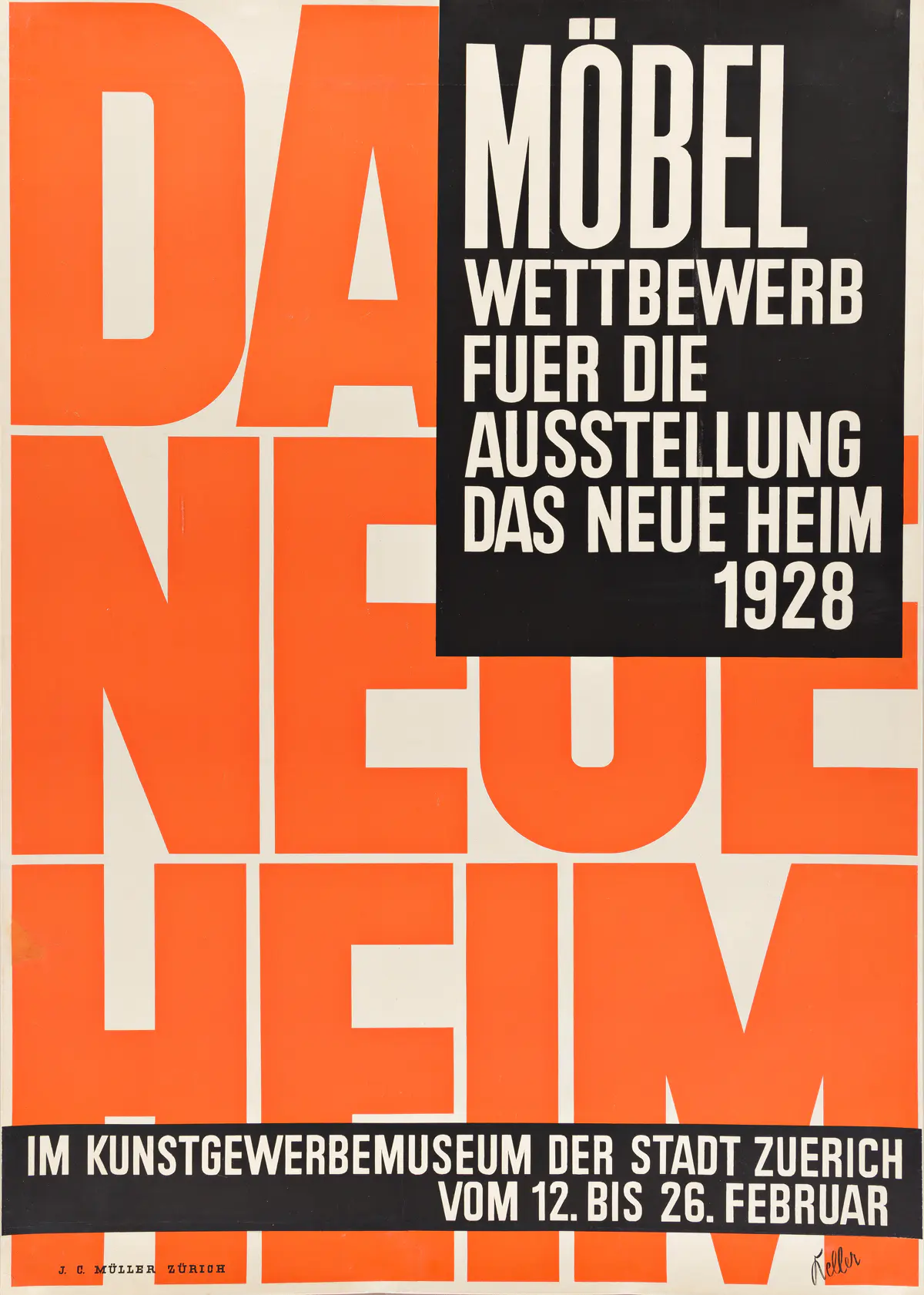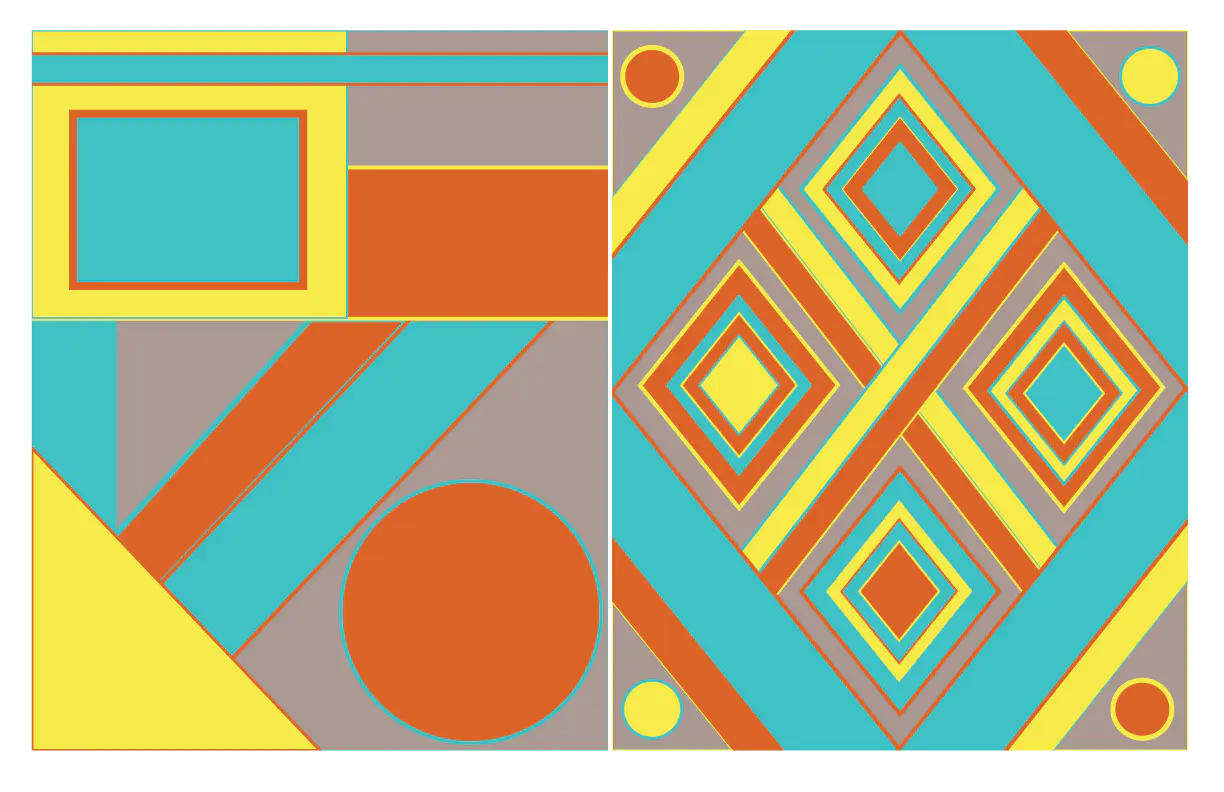Swiss design, renowned for its minimalistic elegance, emerged as a significant force in the early 20th century, challenging the ornate complexities of art nouveau with its clean, structured approach. This design style is characterized by the use of sans-serif typefaces, an emphasis on flat design, and a strict adherence to simplicity and functionality.
These elements collectively forged a unique visual language that has profoundly influenced the realm of graphic design.
At the heart of the Swiss design style lies a deep respect for clarity, with designers favoring a rational, objective approach that communicates the essence of a message without superfluous decoration.
The transition from the decorative flourishes of art nouveau to the stark, geometric precision of Swiss design marked a pivotal moment in design history, setting the stage for the modernist movements that followed.
Unraveling the Swiss Design Phenomenon
Swiss design's global acclaim can be attributed to its foundational principles, which prioritize legibility and objectivity. Publications such as "Typografische Monatsblätter" have been instrumental in disseminating these ideals, showcasing how geometric forms can create visually compelling, yet immensely functional designs.
This design philosophy has captivated audiences worldwide, establishing Swiss design as a universal language of visual clarity.
The Genesis of Swiss Style Graphic Design
In the aftermath of World War II, a new wave of artists and designers sought to redefine the visual landscape. They turned to Swiss design principles as a blueprint for creating a style that emphasized cleanliness, readability, and objectivity. This period marked the birth of the Swiss Style, which would soon become synonymous with the principles of modern graphic design.
The Role of Ernst Keller in Shaping Swiss Design
Ernst Keller, often regarded as the "father of Swiss graphic design," played a pivotal role in the development of the Swiss.

Under his guidance at the Swiss school, Keller nurtured a generation of designers in the principles of functional design, emphasizing the importance of clarity, simplicity, and the effective use of typography. His teachings laid the groundwork for what would evolve into the internationally recognized Swiss Design Style.
Swiss Design vs. International Typographic Style
While Swiss design is celebrated for its minimalist aesthetic, characterized by sans-serif typefaces and flat design, it often overlaps with the International Typographic Style. However, it distinguishes itself through a more disciplined rejection of art nouveau's embellishments. This commitment to a clean, analytical approach, combined with rigorous technical training, underscores the Swiss design style's unique position within the broader landscape of graphic design.
The Evolution from National to International Recognition
Swiss design's ascent from a national treasure to an international standard was spearheaded by visionaries like Emil Ruder in the 1920s and 1930s. Their innovative approach to design, which emphasized the concept of international appeal through simplicity and functionality, formed the basis of the International Typographic Style.
This artistic doctrine, rooted in Swiss design principles, ultimately garnered worldwide acclaim, establishing Swiss design as a cornerstone of modern graphic design.
Key Characteristics That Define Swiss Design
The core of Swiss design is defined by its unwavering use of sans-serif typefaces and sans-serif fonts, with Akzidenz Grotesk becoming almost synonymous with the movement. These elements contribute to the style's signature look, prioritizing legibility and simplicity over decorative flourishes.
Emphasis on Grid Systems and Asymmetry
Grid systems in graphic design are fundamental to Swiss design, providing a structured framework that promotes both creativity and order. This emphasis on grid-based layouts enables designers to achieve a harmonious balance between text, imagery, and white space, often incorporating asymmetry to guide the viewer's eye through the composition in an engaging manner.
The Integration of Photography and Minimal Shapes
Publications like "Neue Grafik" magazine have showcased Swiss design's innovative use of photography and minimal shapes, illustrating how these elements can be combined to convey messages in a visually striking yet understated manner. This integration underscores Swiss design's commitment to simplicity and functionality, setting a benchmark for effective visual communication.
The Core Elements of Swiss Style
The Swiss design style, with its emphasis on minimalism and efficiency, has established itself as an enduring influence in the world of graphic design. Its principles, emphasizing clarity, functionality, and a systematic approach to composition, continue to inspire designers across the globe.
The Grid System: The Backbone of Swiss Design
"Typografische Monatsblätter," among other publications, have highlighted how the grid system, enriched with geometric forms, forms the foundation of Swiss design.

As noted by Philip B. in his "History of Graphic Design," the grid system begins with a mathematical grid to ensure legible and harmonious means for structuring information, often resulting in an aesthetically pleasing asymmetrical layout.
Swiss Typography: A Legacy of Simplicity and Functionality
The use of sans-serif fonts, particularly Akzidenz Grotesk, and the broader category of sans serifs, embodies Swiss typography's legacy of simplicity and functionality.

These typefaces, devoid of unnecessary embellishments, serve as the cornerstone of Swiss design, ensuring that communication is always clear, direct, and visually engaging.
Mastery of White Space: Letting the Design Breathe
Swiss design demonstrates a mastery of using white space, allowing design elements to breathe and thus enhancing the overall clarity and impact of the composition.

This strategic use of white space is central to Swiss design's philosophy, ensuring that each element serves a purpose and contributes to the message's effective conveyance.
The Asymmetric Harmony: Balancing Elements Unconventionally
The unconventional balance of elements through asymmetry is a hallmark of Swiss design, challenging traditional composition norms to create dynamic, engaging layouts.

This approach underscores the style's innovative spirit, proving that harmony can be achieved even when elements are arranged in an unexpected manner.
The Masters of Swiss Design
Swiss design's lasting impact can be credited to the masters who harnessed geometric forms to create groundbreaking work. Their legacy continues to inspire a new generation of designers, ensuring that the principles of Swiss design remain at the forefront of visual communication.
Pioneers Who Shaped the Swiss Style
When you explore the landscape of Swiss design, you encounter influential figures whose work has left an indelible mark. Among these pioneers, Josef Müller-Brockmann stands out for his meticulous approach to visual order, deeply influencing the Swiss school and the broader development of the Swiss style. His legacy, along with that of other pioneers, laid the groundwork for a design movement characterized by its clarity, objectivity, and structured design principles, which continue to resonate within the design community today.
Ernst Keller: The Founding Father
Ernst Keller's profound influence on Swiss design cannot be overstated. Often regarded as the "founding father" of Swiss design, Keller introduced groundbreaking ideas during his tenure as an educator. He believed in the functional use of geometric shapes, advocating for a design approach that balanced artistic expression with practical application. His teachings emphasized the importance of simplicity and the need for designs to communicate effectively, principles that would go on to define the core of Swiss design philosophy.
Josef Müller-Brockmann and the Quest for Visual Order
Josef Müller-Brockmann's quest for visual order transformed the landscape of graphic design. His work, characterized by clean, readable, and objective design, showcased his mastery of typography and layout.

Müller-Brockmann's emphasis on grid systems and the strategic use of white space revolutionized the way information was presented, making his designs not only visually appealing but also functionally superior. His contributions are a testament to the power of Swiss design principles in creating clear, effective visual communication.
The Creative Genius of Max Bill and Karl Gerstner
Max Bill and Karl Gerstner are celebrated for their innovative contributions to Swiss design. Bill's approach merged artistic rigor with mathematical precision, reflecting the Bauhaus tradition's influence on Swiss design. Gerstner, on the other hand, introduced a dynamic approach to design systems, emphasizing variability within a coherent framework. Together, their work exemplifies the creative exploration and intellectual depth that characterizes Swiss design, pushing the boundaries of what graphic design could achieve in terms of both form and function.
Swiss Design in Practice: Examples and Templates
Swiss design transcends theory, finding its expression in a wide array of practical applications. From books and posters to digital interfaces, the principles of Swiss design inform layouts and visual strategies across mediums.
This practical application of Swiss design principles ensures that messages are communicated with clarity and visual appeal, demonstrating the versatility and enduring relevance of Swiss design in both traditional and contemporary projects.
From Theory to Practice: Showcasing Swiss Design
Transitioning from theory to practice, Swiss design shines through its application. Whether it's in print media or digital formats, the principles of clarity, simplicity, and attention to detail guide the creation of works that stand out for their functionality and aesthetic appeal. This seamless integration of Swiss design principles in real-world projects underscores its adaptability and the timeless nature of its visual language.
Top Swiss Style Templates From Envato Elements
Envato Elements offers a treasure trove of Swiss style templates that embody the essence of minimal design. These templates, ranging from web layouts to print materials, are grounded in the principles of Swiss design, offering a clean, modern aesthetic that prioritizes legibility and structure. By utilizing these templates, designers can imbue their projects with the elegance and efficiency that Swiss design is renowned for, making their work not only visually captivating but also highly functional.
Real-World Applications: Cases of Swiss Design in Modern Projects
In the realm of modern projects, Swiss design continues to make its mark through its application in various industries. From branding and packaging to digital interfaces, the influence of Swiss design principles is evident in the emphasis on simplicity, clarity, and functionality. These projects not only pay homage to the legacy of Swiss design but also demonstrate its ongoing relevance and adaptability in addressing contemporary design challenges, ensuring that its principles remain at the forefront of visual communication.
The Global Influence and Legacy of Swiss Design
The global influence of Swiss design is undeniable, shaping the principles of visual communication and design across the world. Icons like Josef Müller-Brockmann, Armin Hofmann, and Emil Ruder, through their work and teaching, along with the use of sans-serif typefaces and a focus on design principles, have established a legacy that transcends borders.
The Swiss style’s emphasis on minimalism, the strategic use of design elements, and the creation of a cohesive corporate identity have become foundational to modern design. Figures like Richard Paul Lohse and Massimo Vignelli further propagated these ideals, making Swiss design synonymous with clarity and functionality in visual communication.
The Timeless Impact of Swiss Design on Today’s Visual Culture
Swiss design has left an indelible mark on today’s visual culture, influencing everything from corporate branding to user interface design. Its principles, rooted in the 20th century but influenced by earlier arts and crafts movements, champion simplicity and functionality. This has made Swiss design especially relevant in the digital age, where clarity and user experience are paramount. The Swiss style’s legacy is evident in the clean, minimalist aesthetics seen across various platforms, proving that its principles are not only timeless but also universally applicable.
Swiss Design and its Role in Modern Branding and UX/UI Design
The principles of Swiss design have become integral to modern branding and UX/UI design, emphasizing the importance of clarity, simplicity, and user-centric approaches. The Swiss style’s influence is evident in the minimalist designs and functional aesthetics that dominate digital interfaces today. By adhering to these principles, designers create more engaging and intuitive experiences for users, underscoring the enduring relevance of Swiss design in shaping user interactions and brand identities in the 21st century.
Navigating the Future of Swiss Design
As we move forward, Swiss design continues to adapt and evolve, meeting the challenges of new mediums and technologies. Its foundational principles of clarity, simplicity, and functionality remain as relevant as ever, guiding designers in creating work that is not only visually appealing but also highly effective. The future of Swiss design lies in its ability to innovate while staying true to its core values, ensuring its ongoing influence and relevance in the ever-changing landscape of design.
Swiss Design in the Digital Age: Adapting to New Mediums
In the digital age, Swiss design principles are being applied to new mediums, from web design to mobile applications. The emphasis on readability, user experience, and minimalism has made Swiss design particularly suited to digital platforms, where clarity and ease of navigation are paramount.

As technology continues to evolve, Swiss design principles provide a solid foundation for innovation, ensuring that designs are not only aesthetically pleasing but also functionally sound.
The Ongoing Relevance of Swiss Principles in Contemporary Design Work
The principles of Swiss design continue to influence contemporary design work, emphasizing the importance of a clean, minimalist aesthetic and functional approach. These principles have proven to be timeless, guiding designers in creating work that is both visually appealing and effective in communicating messages.
As design practices evolve, the foundational elements of Swiss design—such as the use of grid systems, typography, and white space—remain relevant, demonstrating the enduring impact of Swiss design philosophy on the global design landscape.
Final Reflections on the Elegance and Efficiency of Swiss Design
Swiss Design, with its roots deeply embedded in the 19th century, has grown beyond a mere style to become a design system that emphasizes functionality, simplicity, and attention to detail. The pioneering efforts by influential designers like Max Miedinger and Eduard Hoffmann, and institutions like Schule für Gestaltung, have been instrumental in defining the boundaries of what we recognize today as Swiss Style.
This design philosophy, underpinned by the basis of the Swiss style, has flourished, influencing not just the arts and design community but also the broader visual graphics landscape.

Its global spread, especially in the United States, marks the growth of an international style, a testament to its timeless appeal and adaptability. Swiss design's approach to integrating elements like typography, pioneered by legends such as Adrian Frutiger, and its mastery of grid systems, has set a benchmark for clarity, coherence, and visual harmony in design.
As we reflect on the elegance and efficiency of Swiss Design, it's clear that its principles continue to guide and inspire not just Swiss style graphic designers but all who seek a universal form of graphic expression that marries form with function.
